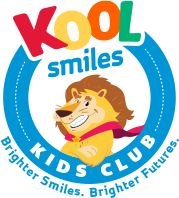
Fractured Teeth: Signs and Symptoms
One of the most common injuries a toddler can have is a fractured tooth. Children don’t have the same balance as adults, and they are prone to falling down, bumping on something hard, or having a play-related accident.
Also, it is important to note that children’s teeth are more susceptible to dental caries, and cracking, as opposed to permanent teeth.
We’ve listed down the common signs and symptoms of fractured teeth. Read on to find out what they are, and how you can prevent them from happening.
Fractured Teeth: What to Look for
Here are the most common symptoms associated with a cracked tooth:
- Lack of appetite due to discomfort when biting into food
- Sharp pain or discomfort when eating or drinking hot or cold food or beverages, especially if it quickly disappears
- Sensitivity or pain when eating sweet or sour food
- Visible cracks in teeth
Fractured teeth are characterized by a recurring sharp pain, often triggered by biting, hot or cold temperatures, or sweet food.
Types of Fractures & Ways to Fix a Fractured Tooth
There are different types of tooth fractures, and dental treatment will depend on the type of fracture the patient has. Some of these are:
- Craze lines. These are superficial cracks on the outermost surface of the enamel of teeth. No treatment is required for cases like these, because these small cracks do not cause pain, nor will they cause future damage.
- Cracked tooth. This is a break extending from the tooth’s chewing surface down to the rest of the crown, or root wherein the fracture has not resulted in the complete split of the tooth. If the crack reaches the pulp chamber, the tooth is saved and treated through endodontic or root canal therapy.
- Split tooth. If a cracked tooth is left untreated, the fracture inevitably becomes worse (through continued use of the teeth) and it can result in the tooth being completely split in half. In these cases, we can remove the tooth, or check to see if a portion may be saved through root canal treatment.
- Fractured cusps. The teeth’s chewing surfaces or cusps come in contact with anything that’s placed inside our mouth. This means that whenever you bite on something hard, the cusps are prone to getting fractured. Depending on how large a a piece of a cusp or tooth surface gets chipped off, it can typically be fixed with a filling or a crown.
- Vertical root fractures. When cracks start from the root area instead of the chewing surface, the damage is called a vertical root fracture. Sometimes the tooth can be saved through endodontic treatment. Otherwise, the tooth is extracted.
Visit Your Local Kool Smiles Kids Club Partner Today
If your child is experiencing sharp pain, or any other fractured tooth symptoms, please seek immediate treatment through our skilled partner dentists.
Our Kool Smiles Kids Club partner dentists are highly qualified to diagnose and treat your child’s teeth concerns. Early intervention can help save teeth, so call us for an appointment today!
